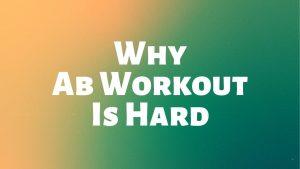What is abdominal strain, and what causes it?
Any tear, stretch, or rupture of the abdominal muscles is considered abdominal strain. Because of this, abdominal strain is occasionally referred to as a pulled muscle.
Abdominal tension can be caused by any of the following:
- Abrupt twisting or rapid movement
- Workout that is both intense and excessive
- Not sufficiently resting overworked muscles
- When participating in sports that demand running, twisting, and jumping, inappropriate technique is used.
- Lifting very heavy objects
- Sneezing, coughing, or laughing
It is not synonymous with an abdominal hernia, despite the fact that some of the symptoms may be similar. A hernia occurs when an internal organ or bodily component protrudes through the muscle or tissue wall in which it is contained.
When you have an abdominal strain, the skin on the outside of your stomach may feel sore and inflamed. These sensations are more likely to occur when you tense your abdominal muscles and move.
Depending on the intensity of the strain, walking, standing up straight, or bending forward or sideways may be difficult. Other core-related actions, such as reaching over your head, may also be challenging.
How to treat an abdominal strain?
Generally, abdominal tension can be treated at home. The majority of minor strains will resolve within a few weeks. Listed below are several therapy alternatives that will aid in a rapid recovery.
Cold therapy
Cold therapy should be administered as quickly as possible to help relieve bleeding, discomfort, and edema. Cold therapy may aid in the reduction of inflammation.
To accomplish this:
- To ice the affected area, obtain an ice pack, gel pack, or bag of frozen veggies.
- Wrap the cold pack with a cloth or towel. This will assist in protecting your skin and minimizing the chance of additional aggravation.
- Apply the cold pack to your injuries gently for ten to fifteen minutes at a time.
If possible, repeat this procedure every hour for the first few days following your accident.
Therapeutic heat or Heat therapy
Heat treatment can assist in relaxing your muscles and relieving tension, hence reducing discomfort. Additionally, heat improves blood flow to the injured area. This has been shown to improve healing and decrease inflammation.
To accomplish this:
- Equip yourself with a heating pad or patch.
- If you do not have a compress on hand, you can fill a clean sock with rice and tie it off. For 1 to 2 minutes, microwave the sock. Ascertain that it is not excessively hot to the touch.
- For up to 20 minutes at a time, apply the warm compress to the affected area.
Repeat this procedure every hour for the first few days following your accident, if possible.
OTC (over-the-counter) analgesics
You can take over-the-counter drugs to alleviate the degree of the pain. Nonsteroidal anti-inflammatory medicines (NSAIDs), such as ibuprofen (Advil) and naproxen sodium (Aleve), may also be used to assist alleviate swelling and inflammation.
Additionally, you can take pain medicines such as aspirin (Bayer) or acetaminophen (Tylenol), but these will have no effect on inflammation.
Compression
Consider using an abdominal binder or bandage to assist with abdominal compression. Pressure applied to the area can assist in minimizing mobility and edema.
Consult your physician to determine how long and how tightly you should wear the binder to alleviate your problems. Additionally, choose a binder composed of an allergen-free material to avoid an allergic reaction.
Take a break
Rest as much as possible and abstain from stressful or strenuous activity. This is especially critical if you are recovering from an athletic injury.
Find a comfortable seat or lie down position and utilize this time to do something soothing. Take it easy until the pain entirely fades. This process could take several weeks.
Physical activity
Following the resolution of your symptoms, you can begin abdominal and core building exercises. Two prominent therapies are curlups and pelvic tilts.
Perform these exercises a few times a week, if your body permits. Allow time for recuperation in between sessions.
To perform curlups:
- Arrange yourself on your back with your knees bent.
- Reposition your arms at your sides.
- Increase the height of your head and shoulders by a few inches. Elevate your arms to the height of your thighs.
- Maintain for 6 seconds.
- Reduce the height of your back.
- Carry out three sets of eight repetitions.
To perform a pelvic tilt, follow these steps:
- Arrange yourself on your back with your knees bent.
- As you draw in, engage and contract your abdominal muscles, pulling your bellybutton toward your spine.
- As you slightly tilt your hips and pelvis back, press your lower back onto the floor.
- Maintain for 6 seconds.
- Retrace your steps and return to your starting place.
- Carry out three sets of eight repetitions.
If you are a fan of sit-ups and worried about abdominal injuries, we highly recommend you to checkout AbMax300, which is a revolutionary sit-up device and comes with stress cushion padding and flex action technology which is comfortable and you can easily build your abs without worries of abs injuries.




